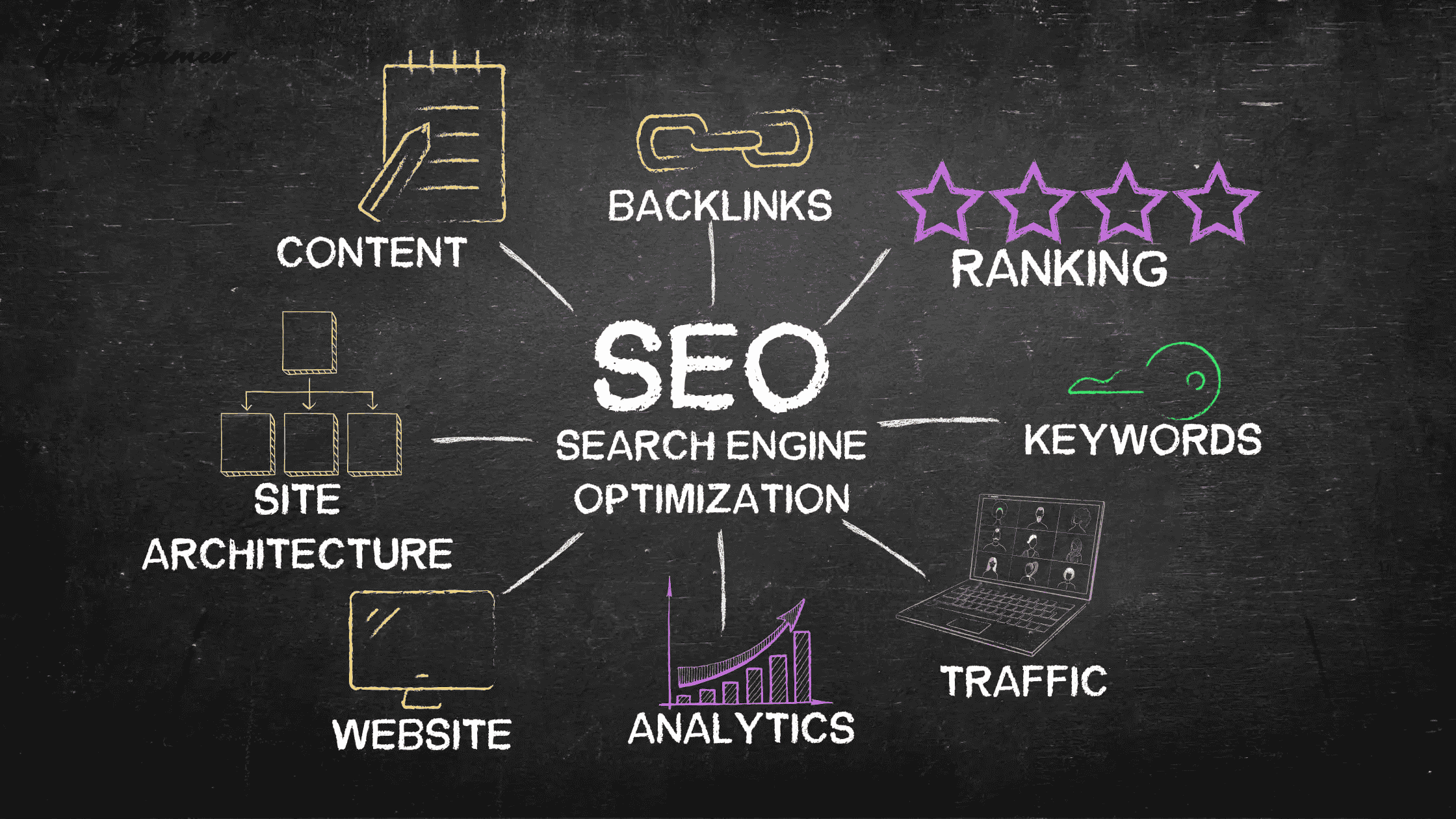Building Stronger Customer Relationships: Strategies for Effective Communication

Introduction
In today’s competitive market, building strong customer relationships is more critical than ever. Customers have a plethora of choices at their fingertips, and their loyalty is increasingly contingent upon the quality of their interactions with businesses. A robust customer relationship can lead to increased retention, positive word-of-mouth, and higher sales, all of which are essential for sustainable growth. At the heart of fostering these relationships lies effective customer communication. Communication serves as the bridge between businesses and their customers, influencing perceptions, expectations, and overall satisfaction. When done well, it can create a sense of connection and loyalty, while poor communication can lead to frustration and disengagement.
The evolving landscape of technology has transformed how businesses communicate with their customers. From personalised emails to real-time chat support, the channels are varied, yet the fundamental goal remains the same: to engage customers in meaningful ways. To achieve this, businesses must adopt strategies that not only convey their messages but also resonate with customers on a personal level.
This outline will explore various strategies for effective communication that can help businesses strengthen their relationships with customers. These strategies include understanding customer needs, personalising communication, practising active listening, maintaining consistency and transparency, leveraging technology, building trust, empowering staff, and measuring success. Incorporating thoughtful gestures such as custom gifts can also enhance customer engagement and demonstrate genuine appreciation. By implementing these approaches, businesses can create an environment where customers feel valued and understood, ultimately leading to long-lasting relationships that benefit both parties. In a world where customer expectations continue to rise, mastering the art of effective communication is not just an option; it is a necessity for success.
Understanding Customer Needs
Understanding customer needs is fundamental to building strong, lasting relationships and driving business success. When businesses truly comprehend what their customers want and expect, they can tailor their products, services, and communication strategies accordingly. This understanding not only enhances customer satisfaction but also fosters loyalty and advocacy.
A. Research and Gather Feedback
The first step in understanding customer needs is conducting thorough research. This can be achieved through a variety of methods, including surveys, questionnaires, and customer interviews. Surveys allow businesses to collect quantitative data on customer preferences, opinions, and pain points. These tools can help identify trends and areas for improvement.
Customer interviews, on the other hand, provide qualitative insights. Engaging directly with customers allows businesses to explore their thoughts and feelings in greater depth. These discussions can reveal underlying motivations and expectations that surveys may not capture. By actively seeking feedback, businesses demonstrate that they value their customers’ opinions and are committed to meeting their needs. These insights can also be extremely helpful when drafting a new proposal which you can easily do by using a project proposal example to guide your structure, ensure clarity, and include all essential details.
B. Analysing Customer Behaviour
In addition to direct feedback, analysing customer behaviour offers invaluable insights. Businesses can utilise data analytics tools to track purchasing patterns, browsing habits, and customer interactions. Understanding how customers engage with products and services can reveal what they value most and help identify potential gaps in the market.
For instance, a company nmight discover that customers frequently abandon their shopping carts at a certain point in the checkout process. This insight could prompt a review of the checkout experience to identify barriers or frustrations that deter customers from completing their purchases.
Social media monitoring is another powerful tool for understanding customer needs. Customers often share their experiences, opinions, and concerns on these platforms. By actively listening to what customers are saying, businesses can gain real-time insights into customer sentiment and preferences. This information can inform product development, marketing strategies, and customer service approaches.
C. Creating Customer Personas
Once businesses have gathered data and feedback, they can develop customer personas. These personas are semi-fictional representations of ideal customers based on real data. They encapsulate key demographics, behaviours, needs, and motivations. By using these personas, businesses can better tailor their offerings and communications to resonate with their target audience.
For example, a tech company might create a persona for a young professional who values innovation and convenience. Understanding this person's needs allows the company to design products and marketing campaigns that speak directly to those preferences, enhancing the likelihood of engagement and conversion.
D. Continuously Evolving Understanding
Understanding customer needs is not a one-time task but an ongoing process. As markets evolve and customer preferences shift, businesses must remain agile and adaptable. Regularly revisiting research methods and feedback mechanisms ensures that companies stay attuned to their customers' changing needs.
Moreover, businesses should foster a culture of curiosity and responsiveness. Encouraging employees at all levels to engage with customers and share insights can create a more holistic understanding of customer needs throughout the organisation.
Personalization of Communication
Personalization of communication is a powerful strategy that enhances customer engagement and fosters stronger relationships. In a marketplace overflowing with choices, customers increasingly seek tailored experiences that make them feel valued and understood. By personalising communication, businesses can effectively meet customer needs, build loyalty, and differentiate themselves from competitors.
A. Tailoring Messages to Individual Customers
At its core, personalization involves crafting messages that resonate with individual customers based on their preferences, behaviours, and past interactions. This begins with gathering relevant data, such as purchase history, browsing behaviour, and demographic information. By analysing this data, businesses can identify patterns and tailor their communication accordingly.
For instance, an online retailer can send personalised product recommendations to customers based on their previous purchases. This not only makes the customer feel acknowledged but also increases the likelihood of additional sales. Similar to how SMS service provides targeted communication, personalised emails that include tailored offers can significantly improve open and click-through rates.
B. Utilising Customer Data for Enhanced Interactions
To effectively personalise communication, businesses must leverage customer data responsibly. Customer Relationship Management (CRM) systems like HubSpot or alternatives to HubSpot play a crucial role in storing and organising this data, allowing for a comprehensive view of each customer’s journey. With this information, companies can segment their audience into distinct groups, enabling more targeted messaging.
For example, a travel agency might segment its customers based on their travel preferences—beach vacations, adventure travel, or cultural experiences. By tailoring marketing messages to each segment, the agency can create more relevant content, such as specialised travel packages or destination highlights, ultimately enhancing the customer experience.
C. Examples of Successful Personalization
Numerous brands have successfully embraced personalization to connect with their customers. For instance, Netflix uses advanced algorithms to recommend shows and movies based on individual viewing habits. This personalised approach keeps users engaged and encourages them to spend more time on the platform.
Similarly, Spotify curates personalised playlists, such as "Discover Weekly," which introduces users to new music based on their listening history. This not only enhances user satisfaction but also builds a sense of community among users who share similar musical tastes.
D. Dynamic and Contextual Personalization
Personalization can also extend beyond static data to include dynamic and contextual elements. For example, a customer browsing an e-commerce website might receive real-time product recommendations based on their current session behaviour. If they spend a significant amount of time looking at running shoes, the website can pop up a message highlighting a sale on running gear.
Contextual personalization considers factors like location, time, and device used. A local restaurant might send a special offer to customers' mobile devices when they are nearby, encouraging them to stop in. This immediacy enhances the relevance of the communication and can drive foot traffic.
E. Balancing Personalization with Privacy
While personalization offers significant benefits, it’s essential to balance it with customer privacy concerns. Businesses must be transparent about how they collect and use customer data and provide options for customers to control their preferences. Building trust through transparency not only enhances customer relationships but also ensures compliance with regulations such as GDPR.
Active Listening

Active listening is a critical communication skill that goes beyond simply hearing words; it involves fully engaging with the speaker, understanding their message, and responding thoughtfully. In the context of customer relationships, active listening can significantly enhance interactions, leading to improved satisfaction and loyalty.
A. Importance of Active Listening
Active listening is essential because it demonstrates to customers that their opinions and concerns are valued. When customers feel heard, they are more likely to trust the business and remain loyal. This is particularly important in customer service settings, where addressing complaints or inquiries effectively can turn a potentially negative experience into a positive one.
B. Techniques for Active Listening
- Paraphrasing and Summarising: One of the most effective techniques is to paraphrase or summarise what the customer has said. This shows that you are paying attention and helps clarify their concerns. For example, a customer might express frustration about a product issue, and respond with, "So, you’re saying that the product didn’t meet your expectations because of X, right?" confirms understanding.
- Asking Clarifying Questions: Asking open-ended questions encourages customers to elaborate on their thoughts. Questions like, “Can you tell me more about that?” or “What specific features are most important to you?” not only gather more information but also show genuine interest in the customer's perspective.
- Non-Verbal Cues: Body language plays a crucial role in active listening. Nodding, maintaining eye contact, and leaning slightly forward can signal attentiveness. In phone or virtual interactions, verbal affirmations like “I see” or “That makes sense” reinforce that you are engaged.
C. Creating a Feedback Loop
Active listening should not be a one-way street. Creating a feedback loop is vital. After listening, summarise your understanding and invite the customer to confirm or correct it. This exchange fosters open communication and ensures that both parties are aligned.
D. Benefits of Active Listening
The benefits of active listening are manifold. It helps in accurately identifying customer needs, resolving issues efficiently, and building rapport. By addressing concerns more effectively, businesses can reduce the likelihood of repeat complaints and improve overall customer satisfaction.
Consistent and Transparent Communication
Consistent and transparent communication is a cornerstone of building strong customer relationships. It fosters trust, reduces uncertainty, and enhances the overall customer experience. In today’s fast-paced business environment, where customers have access to vast amounts of information, maintaining a reliable and open line of communication is more important than ever.
A. Importance of Consistency
Consistency in communication means delivering messages that align with the brand’s values and voice across all channels—whether through email, social media, customer service interactions, or marketing campaigns. When customers receive consistent messaging, it reinforces their understanding of the brand and its offerings. For instance, if a company promotes a commitment to sustainability in its advertising, but its customer service representatives do not reflect this in their interactions, it can lead to confusion and distrust.
Furthermore, consistent communication helps set clear expectations. When customers know what to expect in terms of response times, product delivery, or service quality, they are more likely to feel satisfied with their experience. Consistency builds reliability, and customers are more likely to return to a brand they trust.
B. The Role of Transparency
Transparency involves being open and honest with customers about business practices, policies, and any potential issues. This includes clearly communicating pricing, product features, and any changes to services or policies. Transparency is particularly crucial during challenging times, such as product recalls or service outages. Informing customers proactively about issues and the steps being taken to resolve them demonstrates accountability and fosters trust.
For example, a company experiencing a delay in shipping should communicate this to affected customers promptly. Providing reasons for the delay, along with estimated timelines for resolution, can mitigate frustration and show that the company values its customers’ time and trust.
C. Maintaining Regular Communication Channels
Establishing regular communication channels further enhances consistency and transparency. Email newsletters, social media updates, AI phone calls, and customer portals can keep customers informed about new products, promotions, and company news. These channels serve as platforms for two-way communication, allowing customers to ask questions and provide feedback.
D. Benefits of Consistent and Transparent Communication
The benefits of consistent and transparent communication are profound. It leads to higher customer satisfaction, increased loyalty, and reduced churn rates. When customers feel informed and valued, they are more likely to advocate for the brand and share their positive experiences with others.
Utilizing Technology for Better Communication

In today’s digital landscape, leveraging technology is crucial for enhancing communication with customers. Effective use of various technological tools not only streamlines interactions but also personalises the customer experience, leading to increased satisfaction and loyalty.
A. Customer Relationship Management (CRM) Systems
One of the most impactful tools for improving communication is a Customer Relationship Management (CRM) system. CRMs centralised customer data, allowing businesses to track interactions, preferences, and feedback. By having a comprehensive view of each customer, companies can tailor their communication strategies accordingly. For instance, sales teams can reference past interactions before reaching out, ensuring that their messages are relevant and personalised. Understanding the issues associated with implementing CRMs can also help them navigate potential pitfalls and optimize their CRM usage.
B. Automation Tools
Automation technologies, such as email marketing software like ActiveCampaign or ClickFunnels, and chatbots, can significantly enhance communication efficiency. Automated email campaigns can deliver personalised messages based on customer behaviour, ensuring timely engagement. For example, if a customer abandons their shopping cart, an automated follow-up email can remind them of their items, potentially recovering lost sales.
Chatbots, powered by artificial intelligence, provide real-time assistance on websites or social media platforms. They can answer frequently asked questions, direct customers to relevant resources, and even assist with transactions. By handling routine inquiries, chatbots—built through cutting-edge AI development services,free up human agents to focus on more complex issues, improving overall response times and customer satisfaction.
C. Omnichannel Communication
Utilising technology also enables businesses to adopt omnichannel communication strategies, allowing customers to interact through multiple platforms seamlessly. Whether through email, social media, live chat, or phone, customers can choose their preferred communication channel, and their interactions can be tracked and referenced across all platforms. Solutions like RCS business messaging will further enrich this approach by enabling interactive, branded, and secure conversations directly within the native messaging app, creating a more dynamic experience for users. This continuity enhances the customer experience and ensures that customers do not have to repeat themselves when switching channels.
D. Data Analytics for Improved Insights
Data analytics tools provide valuable insights into customer behaviour and preferences, informing communication strategies. By analysing engagement metrics, such as open rates, click-through rates, and customer feedback, businesses can refine their messaging to better meet customer needs. This data-driven approach helps identify trends and allows for proactive adjustments to communication tactics.
E. Social Media Engagement
Social media platforms offer a dynamic way to engage with customers. Businesses can share updates, respond to inquiries, and foster community interactions. Utilising social media monitoring tools can help companies stay attuned to customer sentiments and address concerns in real time, further enhancing transparency and trust.
Building Trust Through Engagement
Building trust with customers is fundamental to fostering loyalty and ensuring long-term success. Engagement plays a pivotal role in this process, as it creates opportunities for meaningful interactions that can enhance the customer experience. A well-crafted customer engagement strategy helps brands build stronger connections by delivering personalized experiences and consistent value.
A. Fostering a Community
Engagement begins with creating a sense of community around your brand. Businesses can cultivate this community through social media platforms, forums, and loyalty programs. Encouraging customers to share their experiences, provide feedback, and connect with each other fosters a sense of belonging. When customers feel they are part of a community, they are more likely to trust the brand and become advocates for it.
B. Encouraging Customer Participation
Actively involving customers in brand-related activities can significantly strengthen trust. This could involve soliciting feedback on new products, encouraging UGC creators to contribute content, or involving customers in decision-making processes. For example, brands that run contests or polls on social media to gather customer opinions not only make customers feel valued but also demonstrate that their input matters.
C. Recognizing and Rewarding Loyalty
Recognition and rewards are powerful tools for building trust. When businesses acknowledge loyal customers through personalised offers, exclusive access, or public recognition, it reinforces a positive relationship. This acknowledgment shows customers that the brand appreciates their support, fostering deeper connections and encouraging ongoing engagement.
D. Open Communication Channels
Establishing open and transparent communication channels is vital for building trust. Customers should feel comfortable reaching out with questions, concerns, or feedback. Prompt responses and a willingness to address issues show that the brand values customer input and is committed to resolving any problems. Regular updates about company initiatives, product changes, or community involvement can also enhance transparency.
Training and Empowering Staff

Training and empowering staff is crucial for creating a customer-centric culture that enhances communication and fosters strong relationships with customers. Employees are the frontline representatives of any organisation, and their ability to engage effectively with customers significantly influences customer perceptions and experiences.
A. Importance of Employee Training
Comprehensive training programs equip employees with the necessary skills and knowledge to communicate effectively with customers. Training should cover various aspects, including product knowledge, customer service protocols, and effective communication techniques. Employees should be familiar with the brand’s values and messaging to ensure consistency in interactions.
Role-playing exercises and simulations can be particularly effective in training. These activities allow employees to practise handling different customer scenarios, from addressing complaints to providing product recommendations. By building confidence through practical experience, employees are better prepared to engage with customers in real-life situations.
B. Empowering Employees to Make Decisions
Empowerment is about giving employees the authority and autonomy to make decisions that enhance customer satisfaction. When staff members feel trusted to resolve issues and make judgement calls, they are more likely to take ownership of customer interactions. This not only speeds up response times but also leads to more personalised service.
Businesses that partner with a digital staffing agency can gain access to trained professionals who are already equipped with the skills to engage customers effectively, reducing onboarding time and ensuring consistent service quality from day one. This also applies to senior roles, where effective general manager recruitment is crucial for setting the strategic direction and overseeing all aspects of customer engagement.
For instance, allowing customer service representatives to issue refunds or discounts without needing managerial approval can create a more efficient resolution process. Employees who are empowered to act in the best interest of the customer often provide better service, leading to higher levels of customer satisfaction.
C. Creating a Customer-Centric Culture
Training and empowerment should be part of a broader effort to create a customer-centric culture within the organisation. This involves aligning company values and goals with customer needs and expectations. Leadership plays a critical role in modelling customer-centric behaviour and encouraging employees to prioritise customer relationships.
Recognizing and rewarding employees for exceptional customer service can reinforce a customer-centric culture. Celebrating successes and sharing positive customer feedback boosts morale and encourages staff to continue prioritising customer engagement.
Measuring Success
Measuring the effectiveness of communication strategies and overall customer engagement is essential for continuous improvement. By utilising key performance indicators (KPIs), businesses can assess how well they are meeting customer needs and identify areas for enhancement.
A. Key Performance Indicators (KPIs)
Some common KPIs for measuring success in customer communication include:
- Customer Satisfaction Score (CSAT): This metric gauges customer satisfaction immediately after an interaction. Surveys typically ask customers to rate their experience on a scale, providing direct insights into how well communication meets their expectations.
- Net Promoter Score (NPS): NPS measures customer loyalty by asking how likely customers are to recommend the brand to others. A high NPS indicates strong customer relationships and effective communication.
- Customer Retention Rate: This metric reflects the percentage of customers who continue to do business with a company over time. High retention rates often correlate with effective communication and strong customer relationships.
- First Response Time: Measuring the time it takes for a customer to receive an initial response can indicate how effectively a company manages customer inquiries. Shorter response times often lead to higher customer satisfaction.
- Customer Feedback and Reviews: Regularly analysing customer feedback, whether through surveys, online reviews, or social media comments, provides qualitative insights into customer perceptions and experiences. Utilising a Likert scale in surveys allows businesses to quantify customer satisfaction by asking them to rate their experiences, which can highlight strengths and areas for improvement.
B. Continuous Improvement Strategies
Once metrics are established, businesses should analyse the data regularly to identify trends and areas for improvement. For example, if customer feedback consistently highlights slow response times, it may indicate a need for additional training or staffing in the customer service department.
Engaging in regular review meetings allows teams to discuss insights and brainstorm solutions collaboratively. By fostering an environment of continuous improvement, businesses can adapt to changing customer needs and enhance their communication strategies.
Conclusion
In conclusion, building stronger customer relationships through effective communication is an ongoing process that involves multiple strategies and practices. Understanding customer needs, personalising communication, practising active listening, and maintaining consistent and transparent communication are foundational elements that significantly contribute to customer satisfaction.
Training and empowering staff play a vital role in this process. Well-trained employees who are empowered to make decisions can engage customers more effectively, leading to enhanced satisfaction and loyalty. Creating a customer-centric culture ensures that the organisation remains focused on meeting customer needs, while recognition and rewards for exceptional service reinforce this commitment.
Measuring success through key performance indicators allows businesses to track their progress and identify areas for improvement. Regular analysis of customer feedback and communication metrics enables organisations to adapt and refine their strategies continually.
Ultimately, the ability to build strong customer relationships through effective communication not only enhances customer satisfaction but also drives long-term success. In a competitive marketplace, businesses that prioritise these strategies will stand out, fostering loyalty and advocacy among their customer base. By investing in training, leveraging technology, and maintaining open lines of communication, companies can create lasting connections that benefit both the customer and the organisation.





